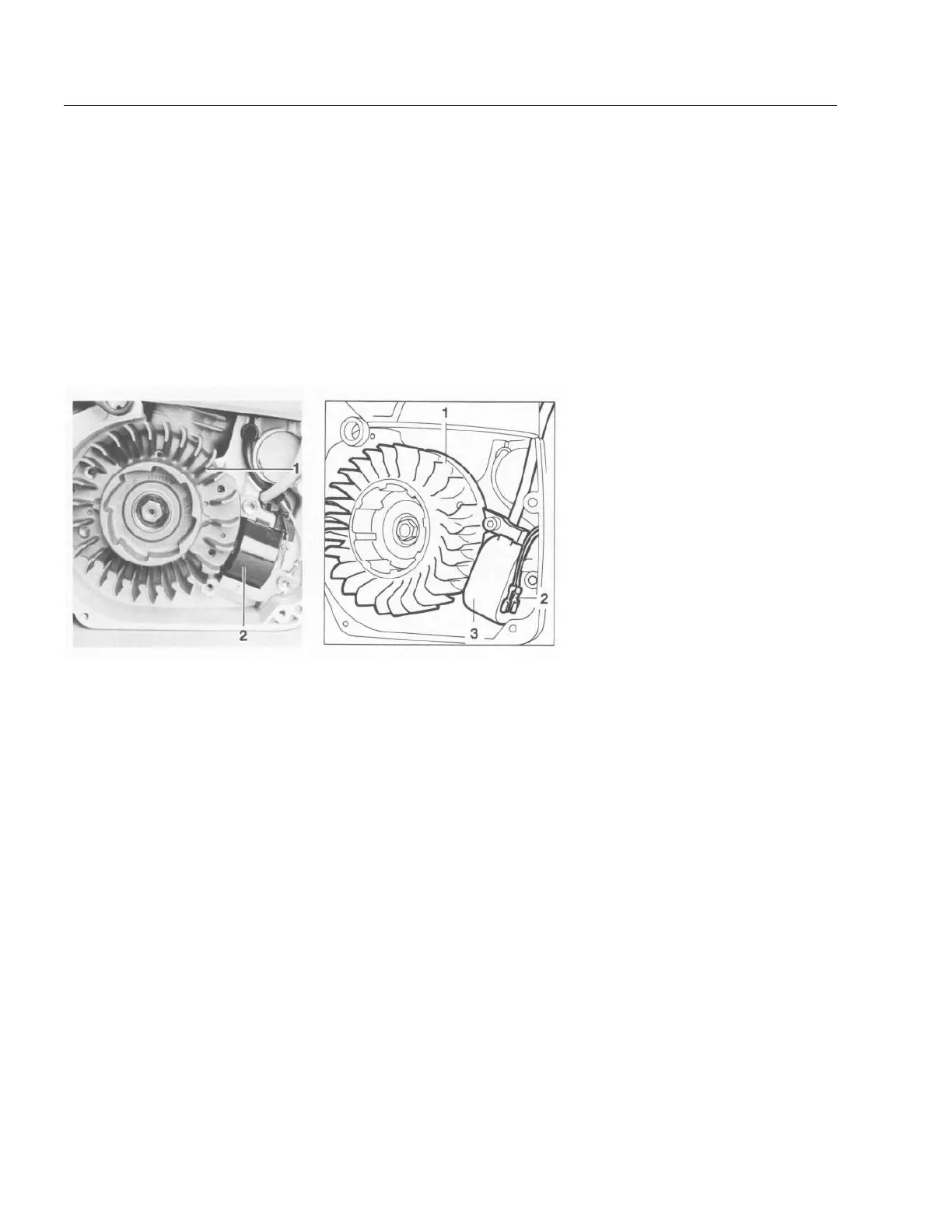STIHL 064, 066 45
5. IGNITION SYSTEM
Warning! Exercise extreme caution when
carrying out maintenance and repair work
on the ignition system. The high voltages
which occur can cause serious or even
fatal accidents!
1 = Flywheel
1 = Flywheel 2 = Wire for LED (066 only)
2 = I
nition module 3 = I
nition module
di
ital
CDIC and CDIC A digital ignition modules
feature an electronic cut-in threshold to
prevent backfiring during engine starts. An
ignition spark is generated only if the
cranking speed of the crankshaft is high
enough for its mass moment of inertia to
overcome combustion pressure.
Cut-in threshold:
CDIC ignition module (064) =
1,200 rpm
CDIC A ignition module (066) =
500 rpm
Older STIHL 064 saws are Model 064 saws from machine When using the spark test to
equipped with a transistor-control- number X 18 761 250 are check installed digital ignition
led electronic (breakerless) magne- equipped with an electronic digital modules with the sprark plug un-
to ignition system which requires ignition which features a maximum screwed, make sure that the star-
no outside power source (battery speed governor and requires no ter rope is pulled at a sufficiently
or dynamo). outside power source. high speed. If there is no spark at
the plug when the starter is pulled,
The system consists basically of The STIHL 066 is also equipped repeat the test at a higher cranking
an ignition module and flywheel with an electronic digital ignition speed.
and is easily accessible. with a maximum speed governor.
Note: A special flywheel is in- The ignition module installed in the
stalled in models with heated 066 has a second connection for a
handles (with ring magnet for the light emitting diode (LED) which
generator). aids carburetor adjustment.
Analog ignition systems can be In the digital ignition system the
converted to a digital system. This zero values of the magnetic flux
necesitates changing the flywheel in the magnetic field between the
and carburetor. flywheel and ignition module yoke
are evaluated to determine ignition
timing. This means that ignition
timing is tied to fixed physical
values and can be varied only by
the electronically stored advance
curve as a function of engine
speed.
